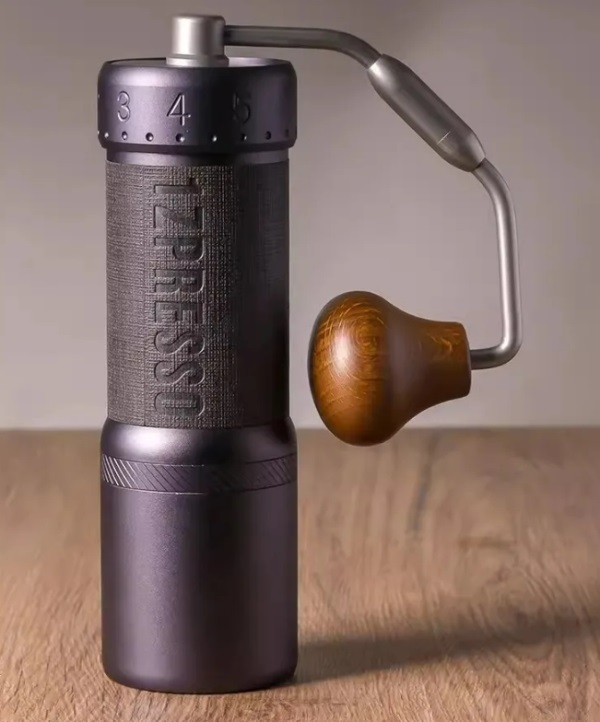Master the Art of Grinding Coffee Beans: A Guide to Coffee Grinders
For coffee enthusiasts, the procedure of grinding coffee beans is more than just a routine job; it is an art type that can significantly influence the taste and quality of the final mixture. Coffee grinders play a crucial duty in this delicate process, yet mastering their use includes greater than simply pressing a switch. Recognizing the nuances of various grinder kinds, selecting the suitable grind size, and utilizing the right strategies are important actions towards accomplishing that best cup of coffee. The journey in the direction of coming to be a coffee grinding master doesn't end there. As we explore the intricacies of this craft, we will certainly discover upkeep keys, fixing suggestions, and more, all focused on boosting your coffee experience to brand-new elevations.
Kinds of Coffee Grinders
There are 3 main kinds of coffee mills commonly made use of by coffee lovers: blade grinders, burr grinders, and manual mills. Blade mills are the a lot of fundamental kind, utilizing a simple blade to slice the coffee beans. While they are affordable and very easy to use, they frequently cause irregular coffee premises because of inconsistent grinding. Burr grinders, on the various other hand, use more precision by squashing the beans between a moving grinding wheel and a non-moving surface area. This leads to a consistent grind dimension, which is important for a regular coffee flavor. Burr grinders come in both level and cone-shaped forms, each offering slightly different grinding characteristics.
Hands-on mills, as the name recommends, require manual initiative to grind the coffee beans. Each kind of coffee mill has its advantages and perfect usage cases, catering to the varied preferences of coffee lovers.

Selecting the Right Grind Size
With an understanding of the various sorts of coffee grinders, the following critical action in achieving the excellent mug of coffee is choosing the ideal work size. The grind dimension plays a considerable function in identifying the taste profile of your coffee (1Zpresso J-Max). Various brewing approaches call for certain grind dimensions to optimize the removal of flavors from the coffee premises
For a coarse work, ideal for French press and cool mixture approaches, the coffee beans ought to resemble breadcrumbs, providing a robust and strong flavor. Medium-coarse grinds, suitable for Chemex or Clever Dripper, have a structure similar to rugged sand, using a balanced preference.
Medium grinds, commonly used in drip coffee machine, have a consistency appearing like normal sand, resulting in an all-round flavor. Great over here grinds, ideal for espresso equipments, are akin to table salt, yielding an abundant and extreme preference. Extra-fine grinds, utilized in Turkish coffee, are as great as powdered sugar and create a solid and potent brew.
Grinding Techniques for Ideal Flavor
To draw out the max capacity of flavor from your coffee beans, grasping proper grinding strategies is crucial. Uniformity is essential when it involves grinding coffee beans for optimal taste. Guaranteeing that the coffee beans are ground uniformly is vital to achieve a balanced extraction throughout the brewing procedure. Among the basic methods for enhancing taste is to change the grind dimension based upon the developing approach being used. A great grind is perfect for coffee machines, while a crude grind is extra suitable for French press brewing. Additionally, the grinding time plays a substantial role in taste extraction. Over-grinding can cause a bitter preference, while under-grinding might result in a sour flavor. It is advised to trying out different work sizes and developing times to discover the best equilibrium that suits your taste choices. By focusing on these grinding methods, you can raise the taste account of your coffee and delight in an extra gratifying mug every single time.
Maintenance and Cleaning Up Tips

Change any type of damaged parts promptly to preserve the quality of your coffee grind. By complying with these maintenance and cleansing suggestions, you can make sure that your coffee mill proceeds to deliver delicious newly ground coffee for years to come.
Troubleshooting Common Grinder Issues


Guaranteeing your coffee mill works efficiently calls for skilled troubleshooting of common problems that may arise throughout its use. One common issue with coffee grinders is inconsistent work size. This problem can happen because of boring blades, incorrect calibration, or uneven coffee beans. To resolve this, ensure your mill's blades are sharp and properly lined up, calibrate the mill according to the wanted grind size, and drink the grinder carefully while in use to aid achieve a more uniform grind.
This can occur when oils from the coffee beans construct up and block the grinder's chute. To settle this, disassemble the mill and clean all parts extensively, paying special interest to the chute and burrs.
Finally, if your grinder is producing extreme noise during procedure, it might show a problem with the electric motor or internal components. In such situations, it is a good idea to seek advice from the manufacturer's guidelines for fixing steps or seek professional assistance to diagnose and fix the problem promptly.
Final Thought
To conclude, understanding the art of grinding coffee beans entails understanding the different sorts of coffee mills, picking the right work size, using correct grinding techniques for ideal taste, and preserving and cleaning the grinder on a regular basis. By following these standards and fixing common mill problems, coffee lovers can boost their coffee developing experience and enjoy a delicious mug of coffee whenever.